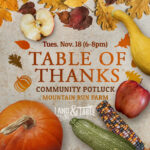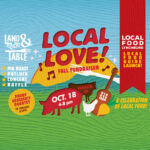Here is another one of several talks I will be posting related to factory farming and CAFOs (concentrated animal feeding operations) by John Ikerd, Professor Emeritus of Agricultural Economics, University of Missouri, Columbia. “John was raised on a small dairy farm in southwest Missouri and received his BS, MS, and Ph.D. degrees in agricultural economics from the University of Missouri. He worked in private industry for a time and spent thirty years in various professorial positions at North Carolina State University, Oklahoma State University, University of Georgia, and the University of Missouri before retiring in early 2000. Since retiring, he spends most of his time writing and speaking on issues related to sustainability with an emphasis on economics and agriculture.” (source)
The Hidden Costs of Factory Farming I appreciate the opportunity to participate in this national conference to end factory farming; it is a very worthwhile and timely mission, in fact is long overdue. The emphasis of the conference quite logically is on large-scale confinement animal feeding operations, as these so-called CAFOs are the epitome of factory farming. I have been involved in the war against CAFOs for more than 15 years now, going back to the mid-1990s. While we have been winning more of the battles recently, we are a long way from winning the war. More of our meat, milk, and eggs are produced in CAFOs every year. First it was poultry, then beef, then pork, and now dairy production has been forced off independent family farms and into giant animal factories. So, why haven’t we won the war? I am going to focus my response to that question on the economic reasons. I am one of the few agricultural economists who have been willing to critically evaluate CAFOs. I assume that’s the reason I was invited to this conference. First, I think most people have been led to believe that CAFOs are the most economically efficient means of producing animal products. Consumers are told that farmers can’t provide adequate meat, milk, and eggs for the hungry people of the world without CAFOs, or at least that food costs will be so high that many people won’t be able to afford adequate protein in their diets. However, USDA data on food consumption clearly refute those claims. For example, trends in per capita production of beef and pork in the U.S. has remained basically flat during the transition from family farms to CAFOs. Poultry production has increased for other reasons, and has continued to increase long after the industry was taken over by CAFOs. In fact red meat consumption has actually declined in recent years. Retail prices have also remained basically constant, after considering inflation. Any reduction in farm level costs of production have been offset by wider profit margins for food processors and retailers. Consumers have not benefitted economically from CAFOs. Second, most people don’t consider the socio-economic costs of CAFOs. Rural residents are told that CAFOs are the future of farming. If they oppose CAFOs they are not only threatening the economic future of American farmers but are destroying the economic foundation for rural communities. In truth, CAFOS are the end of real farming in America. They are factories, not farms. They drive real farmers out of business, not because they are more economically efficient but because they have more economic and political power. They are able to manipulate market prices and garner government subsidies to mask their actual lack of ability to compete with independent family farms. There is no future for farmers in an industry dominated by CAFOs. Regardless, CAFOs have been successfully promoted as an economic development strategy for depressed rural communities. However, the promised employment turns out to be low-paying jobs, without benefits, that go primarily to people who move into CAFO communities. Few local people are willing to work under the dangerous and degrading conditions that exist in CAFOs. Most of the profits from factory farms go to outside corporate investors, not to local farmers or rural residents. Any local tax benefits are more than offset by higher costs to repair roads and bridges damaged by the large trucks that service CAFOs and by increased costs of education, health care, and law enforcement made necessary by people who move into communities to work in the CAFOs. Perhaps most important, the controversy that inevitably surrounds CAFOs rips the social fabric of rural communities asunder. CAFO proponents invariably rely on economic impact assessment models to project how many jobs will be created by CAFOs and how much economic benefit will accrue to local communities. These models can be easily manipulated to generate just about any result you want. We don’t need to rely on economic models. We now have decades of economic data and socio-economic studies clearly documenting that communities without CAFOs are better places to live – aesthetically, socially, and economically.[iii] Perhaps most telling, no rural community where CAFOs represent a major aspect of the local economy is looked to by other communities as a model for rural economic development. A third reason we haven’t won the war against CAFOs is that people still don’t understand the environmental costs of CAFOs, in spite of modest success in this regard. The environmental costs are readily apparent in air pollution, water pollution, and associated health risks for those who work in CAFOs and live in CAFO communities. For example, the Johns Hopkins School of Public Health has assembled an abundance of scientific studies concerning the contamination of air, water, soil, and foods with toxic chemicals, infectious diseases, antibiotic resistant bacteria, and E. coli 0157:H7.[iv] A prestigious commission funded by the Pew Charitable Trust concluded in their 2008 report, “The current industrial farm animal production system often poses unacceptable risks to public health, the environment and the welfare of the animals… the negative effects of the system are too great and the scientific evidence is too strong to ignore.”[v] Last, and perhaps most important, CAFO advocates have been able to use “wedge issues” to weaken public opposition to CAFOs. They label CAFO opponents as “outsiders who don’t understand farming,” although many local opponents are multi-generation family farmer. They label opponents as radical environmentalists who are willing to destroy agriculture to restore pristine streams and natural areas or to protect endangered species. They label opponents as “animal rightist” who care more about the comfort of animals than the welfare of people. They have been able to use these wedges to splinter CAFO opponents into separate camps that are unable or unwilling to work together on public initiatives, even though they obviously agree in their opposition to CAFOs. More specifically to this conference, they are able to drive wedges between those who believe in animal agriculture and those who oppose animal agriculture. If we are to win the war against CAFOs, we must find common ground on which to fight the battles. First, we need to focus on the fundamental problem; not on specific environmental, social, or ethical consequences. The factory farming systems as a whole is the source of all these problems and the solution is not to fix specific problems but to eliminate the system as a whole. Second, we need to find and focus on our areas of agreement. Both advocates and opponents of animal agriculture agree animals must be treated with respect, which is totally lacking in CAFOs. We also agree that public health is a major concern and that CAFOs are a major contributor to public health problems. We need to set our philosophical differences aside, at least for a time. If we can’t work together to eliminate CAFOs we are not going to be able to protect family farms, rural communities, or farm animals. We must be willing to allow time and further enlightenment to evolve toward a fuller understanding of relationships between humans and farm animals. End Notes:



